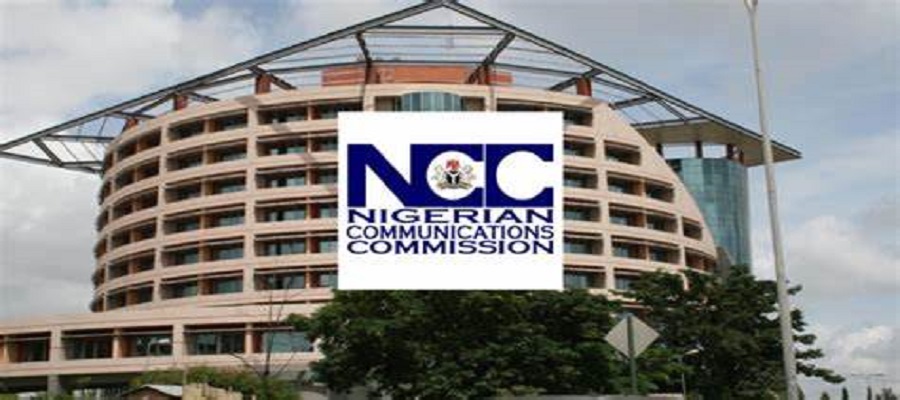Telecom
5G Core, Evolve from 4G to 5G Cost Efficiently

By Said Zantout
As 5G picks up speed, the new networks will co-exist with the existing 4G ones in the coming years. For Communication Service Providers (CSPs), flexibility in balancing cost-optimized versus performance optimized network deployment is crucial to maximize profitability and take advantage of the wide range of business opportunities.

Said Zantout, Ericsson
Basically, it means they need to have the option to migrate to 5G in their own time and in alignment with their business needs.
The journey to 5G Core is not simple, though, and will imply a technology shift with the adoption of a new 3GPP defined network architecture (service-based architecture) and new network functions built on cloud native technology. With service providers’ needs and concerns in mind we have developed the dual-mode 5G Core solution.
Dual-mode 5G Core provides that kind of desired control by combining Evolved Packet Core (EPC) and 5G Core network functions into a common cloud native platform. CSPs can get the most out of cloud native, microservices and user plane performance by implementing the dual-mode core solution as the best way for efficient control of Total Cost of Ownership (TCO) while smoothly migrating to 5G.
As hard as it sounds to achieve challenging business and operational goals while migrating to a 5G Core, with dual mode it is possible.
If we look at Ericsson’s dual mode 5G Cloud Core solution, it is fully based on cloud native principles, with software architecture being based on microservice technology.
This is to ensure that the underlying infrastructure will have better capacity and elasticity, which in turn will offer high levels of orchestration and automation for operational efficiency.
Dual-mode solution enables CSPs to manage one network instead of two and add programmability to their network. The decomposition of software into microservices facilitates a fast, low-cost method of introducing new services on a small scale.
At the same time, it supports easy and effective scaling of services from hundreds of users to millions and this is exactly how CSPs can address new business opportunities or pursue those that have been difficult to address until now.
While no journey to a future core will be alike, what applies to every CSP is the need to have a holistic view on cost. A report by Ericsson titled “Dual-mode 5G Cloud Core: TCO benefits” highlights that substantial saving is possible in various areas of dual-mode cloud native operations, including:
— Up to 20 percent of capex in Core network infrastructure
— Up to 15 percent savings in database infrastructure
— 70 percent OpEx savings in configuration of policies
— Up to 80 percent cost savings in network integration
— More than 60 percent reduced OpEx for software upgrades
As 5G evolves, dual mode core supports both Evolved Packet Core (EPC) and 5G core, combining both functionalities and offering a uniform operational maintenance that is able to scale with the speed that 5G use cases demand.
Migrating to a 5G NR SA and 5GC network is crucial for our customers’ success, enabling them to unlock key 5G functionalities like faster speeds, ultra-low latency and advanced network slicing – allowing our customers to support increasingly complex 5G use cases such as automated manufacturing, remote healthcare and connected vehicles.
This migration will also allow service providers to simplify operations and service agility, enhance user experience with better coverage and improve network capabilities.
To secure new 5G revenue streams while continuing to support existing 4G customer base, service providers can begin by introducing 5G New Radio (NR) non-standalone (NSA) and run both generations side by side supported by the Evolved Packet Core while migrating to 5G NR standalone (SA) and a 5GC network.
At Ericsson, we have been learning from previous technology shifts. As we enter 5G era with all its complexity and unknown opportunities, we know the value of migrating networks at own pace and dual-mode 5G Cloud Core solution provides enhancements that enables this vision.
By implementing the dual-mode solution, service providers will have more control to migrate to 5G on their own pace and in alignment to their business needs.
Said Zantout is Head of Solution Area OSS, Core and Cloud at Ericsson Middle East and Africa.
Telecom
MTN Nigeria Crowns Ayo Benzi Winner of Next Afrobeats Star

MTN Nigeria, in collaboration with ONErpm and Ultima Studios, has announced Ayodeji Benson, popularly known as Ayo Benzi, as the winner of the maiden edition of the Next Afrobeats Star reality show.

L-R: Onyinye Ikenna-Emeka, Chief Marketing Officer, MTN Nigeria; Ayodeji Benson, Winner, Next Afrobeats Star Reality Show (Season 1) and Emamoke Ogoro, General Manager, Brand and Communication, MTN Nigeria, at the grand finale of the Next Afrobeats Star Reality Show (Season 1), held at the Ultima Studios, Lekki, Lagos on Saturday, December 13, 2025.
The grand finale, held on Sunday night at Ultima Studios in Lekki, Lagos, marked the climax of a nationwide talent search that began in September with over 15,000 aspiring musicians.
After weeks of auditions, mentorship, and rigorous training, five finalists – Ayo Benzi, Dave Cash, Kaeko, Somto O’Laker, and Lucky Yay – battled for the top prize in a high-energy showcase of performance and artistry.
At the end of the electrifying contest, Ayo Benzi emerged victorious, securing a ₦150 million music deal. Dave Cash was named first runner-up with ₦100 million, while Kaeko, Somto O’Laker, and Lucky Yay received ₦75 million, ₦50 million, and ₦25 million respectively.
Throughout the season, contestants were mentored by leading Afrobeats producers Sarz, Puffy Tee, P Prime, and Andre Vibez. Benzi, who was part of Puffy Tee’s team, credited the mentorship programme for sharpening his craft and stage presence.
Speaking at the event, Onyinye Ikenna-Emeka, Chief Marketing Officer of MTN Nigeria, said the initiative reflects the company’s commitment to youth empowerment and cultural expression.
“The Next Afrobeats Star platform is about creating real opportunities for young Nigerians and giving their talent the structure, visibility, and support it deserves.
“Afrobeats continues to place Nigeria on the global cultural map, and MTN is proud to be enabling the next generation of artists who will take this sound even further,” she said.
She added that the finale was not just a competition but a celebration of growth and readiness for the global stage.
In his acceptance speech, Ayo Benzi described the victory as a defining moment in his career.
“A big thank you to MTN. From the audition days, the treatment MTN has given us has been amazing. God bless the brand,” he said.
The finale also featured guest performances by Afrobeats stars Iyanya and Bella Shmurda, adding glamour to the night and reinforcing the show’s connection to the wider music ecosystem.
With the successful conclusion of the season, MTN Nigeria and its partners reaffirmed their role in championing youth ambition, supporting creative industries, and shaping the future of Nigerian music through platforms that turn potential into opportunity.
Telecom
T2 Faces NCC Probe in Benue Over Major Service Outage in 9 LGAs

T2, formerly known as 9mobile, is under investigation by the Nigerian Communications Commission (NCC) in Benue State for an undisclosed incident disrupting USSD, SMS, voice, and data services across nine local government areas.

T2
The affected areas include Ado, Agatu, Gwer East, Gwer West, Konshisha, Obi, Ohimini, Okpokwu, and Otukpo, as detailed in an advisory on the NCC Major Outages Portal, which tracks significant disruptions reported by Mobile Network Operators (MNOs) and Internet Service Providers (ISPs).
Neither T2 nor its public relations firm, Chain Reactions, has responded to inquiries on the outage’s cause or restoration efforts as of this report.
The NCC’s continued reference to the operator as 9mobile, months after its public rebranding to T2 in August 2025, has sparked questions about whether the name change was formally notified to the regulator.
This probe aligns with NCC mandates requiring operators to disclose major outages, their impacts, and timelines for fixes, with compensation obligatory for disruptions exceeding 24 hours under the Consumer Code of Practice Regulations.
Industry watchers note that such incidents, often linked to fibre cuts, power failures, or infrastructure faults, underscore ongoing challenges in Nigeria’s telecoms sector, particularly amid T2’s subscriber losses post-rebrand. NCC vows transparency via its portal to hold operators accountable and protect consumers.
Telecom
NCC Unveils Draft 5-Year Spectrum Roadmap, 60 GHz License-Exempt Guidelines to Boost Broadband, Innovation

Nigerian Communications Commission (NCC) has unveiled two pivotal regulatory draft documents aimed at reshaping Nigeria’s communications sector over the next five years and fast-tracking deployment of ultra-high-speed wireless technologies.

NCC
In a public notice dated December 19, 2025, and issued pursuant to its mandate under the Nigerian Communications Act (NCA) 2003, the Commission published the Draft 5-Year Spectrum Roadmap for the Communications Sector (2025–2030) and Draft Guidelines for the Use of the 60 GHz License-Exempt Band for Multi-Gigabit Wireless Systems.
Both documents are accessible on the NCC website for stakeholder review, with the roadmap outlining strategic spectrum planning, allocation, and management to optimise utilisation, support emerging technologies like 5G and IoT, expand broadband access, and align with global best practices.
The Spectrum Roadmap emphasises four core pillars: bridging the digital divide through low-band spectrum and satellite services, attracting investments via flexible licensing models, enhancing service quality with mid-band optimisation, and fostering innovation in areas such as direct-to-device connectivity and secondary spectrum trading.
It sets ambitious targets including universal 4G coverage nationwide, 50 per cent 5G penetration in state capitals, and average broadband speeds of 100 Mbps by 2030, while addressing rising data demand through band refarming and efficient management.
Complementing this, the 60 GHz Guidelines establish a license-exempt framework for the 57–66 GHz band, enabling multi-gigabit speeds up to 10 Gbps for short-range applications like WiGig, fixed wireless access, enterprise connectivity, urban broadband, and backhaul solutions.
The rules mandate NCC type approval for equipment, site registration for outdoor use, and interference mitigation measures, while prohibiting wide-area networks to safeguard primary users.
In line with Section 58 of the NCA 2003, NCC invites comments from industry operators, equipment manufacturers, consumer groups, and the public, with submissions due by Friday, January 16, 2025, via email to [email protected], [email protected], and [email protected].
The notice, signed by Mrs Nnenna Ukoha, Head of Public Affairs, stresses that stakeholder inputs will refine the frameworks to drive innovation, investment, competition, and sustainable growth in Nigeria’s telecoms ecosystem.

 News3 days ago
News3 days agoInsomniaQ Spotlights African Creativity in Lagos

 General News3 days ago
General News3 days agoT2 Backs Youth Excellence as NCBC Wins Bosun Tijani Foundation Basketball Tournament

 E-Financial2 days ago
E-Financial2 days agoNigeria’s N58.18trn Budget and Rising Cost of Deficit Governance

 Telecom2 days ago
Telecom2 days agoNnaemeka Ani – The Architect of ‘Code and Courage’

 Telecom2 days ago
Telecom2 days agoMTN Nigeria Appreciates Partners, Customers at Lagos Prestige Experience

 Telecom1 day ago
Telecom1 day agoT2 Faces NCC Probe in Benue Over Major Service Outage in 9 LGAs

 Telecom1 day ago
Telecom1 day agoNCC Grants 45 Days for Telecoms Firms to Fix Unapproved Shareholding Changes

 Telecom1 day ago
Telecom1 day agoNCC Unveils Draft 5-Year Spectrum Roadmap, 60 GHz License-Exempt Guidelines to Boost Broadband, Innovation



























